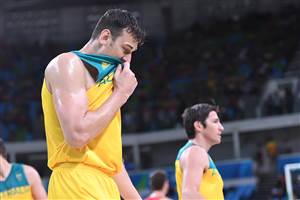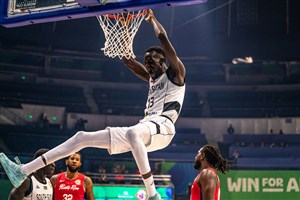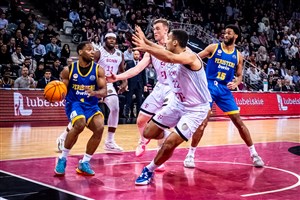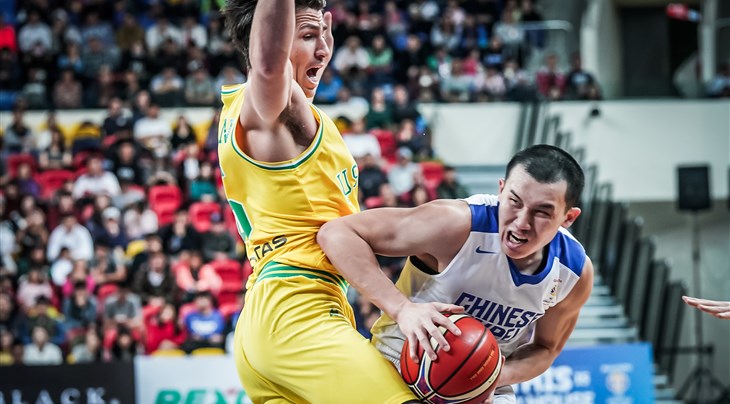
Which countries are in danger of Asian Qualifiers elimination?
MANILA (Enzo Flojo's Asia on My Mind) - We are entering just the second window of the Asian Qualifiers, but even this early, some teams are in danger of falling by the wayside.
Unless you've been living under a rock, you should know that not all sixteen teams will advance to the next round of the FIBA Basketball World Cup 2019 Asian Qualifiers. By the end of the third window in July this year, the top three sides from each first round group will advance to the next round, which leaves one team per group - or four teams overall - eliminated. As of this writing, here are the four squads most at risk of getting the boot.
Hong Kong
After losing both their first window matches by an average of 55.5 points, Hong Kong seem to have bitten off more than they can chew. Don't get me wrong - this is a team with talent. Duncan Reid is a double-double threat. Lee Ki and Fong Shing Yee are solid wingmen. Some of the guys who didn't play in the first window like Chan Siu Wing, Adam Xu and Lo Yi Ting can also hack it with the best of Asia. So what gives? For one, size is a glaring weakness for Hong Kong. Reid and Lau Hoi To - both 2.03m - were their tallest players in the first window, and against the other Group A teams, that just won't be enough. They also need better playmaking. In both their first window losses, they had much fewer assists and much more turnovers than their foes. If Hong Kong can establish Reid down low and move the ball well enough to locate their open shooters, they can be a competitive bunch, but judging by how they've played so far, they may be on the wrong end of several more blowouts in the next two windows.
Chinese Taipei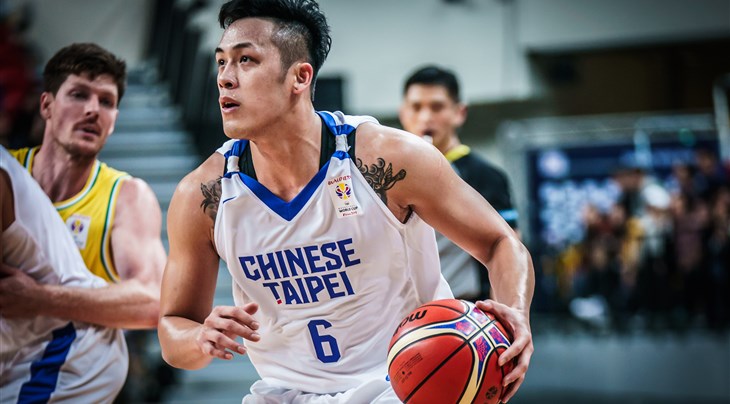
2017 was a special year for Taipei basketball because they won the EABA Championship for the first time ever, but it will also be remembered as they year they crashed and burned in both the FIBA Asia Cup and Asian Qualifiers first window. After winning the EABA Championship in June, Chinese Taipei lost all but one of their next six fixtures at the continental level. Now they sit at the bottom of Group B and face a practical must-win situation against no less than Japan on 22 February on the road at the Yokohama International Arena. Yes, they are obviously still in a state of transition after the "golden generation" of Lin Chih-Chieh, Tien Lei and Tseng Wen-Ting have seemingly fully handed over the team's reins to the "new generation," but Taipei still need to play better than they have. Quincy Davis remains an elite center in Asia, but the players around him haven't caught up. Both Liu Cheng and Chou Yi-Hsiang have yet to fully embrace their new roles as this squad's leaders, and guys like Chou Po-Chen, Hu Long-Mao and Chou Po-Hsun really need to step up. Unless that happens, Taipei look headed for an early out.
India
India will go where their Big Three will go, and so far, their Big Three haven't been complete to lead them anywhere special. Three years ago, India made a breakthrough by finishing among the top eight teams in Asia, serving notice of the Young Cagers' potential for greatness. Leading the way were Vishesh Bhriguvanshi, Amjyot Singh and Amritpal Singh - all of whom were set for stardom. Fast forward to 2017, however, and the stars just have not lined up for India. Bhriguvanshi suffered a major knee injury just before the FIBA Asia Cup 2017, sinking India's chances to match their Quarter-Finals finish from 2015. After then, Amjyot decided to join the NBA G-League, effectively leading to his foregoing the Asian Qualifiers first window. All that's left of the Big Three was Amritpal, who may have blazed a trail for Asian players at the NBL-Australia, but he alone cannot carry India to greater heights in the Asian Qualifiers. For India to make some noise in the second window, there is no doubt they will need their Big Three to be complete and healthy once again.
Qatar
It seems so long ago when Qatar was mentioned as an elite national side in Asia. With legendary Yaseen Musa retiring and a revolving door of naturalized players, though, Al Annabi have not really established a fresh new identity as a national team. Seasoned veterans like Erfan Ali Saeed, Omer Salem and Mohd Mohammed are still around, sure, but it's clear that the team no longer belong to their generation. The locomotive driving Qatar to the future is named Abdulrahman Saad, a 21-year-old spitfire guard who can score a bunches in a matter of seconds. Saad averaged 19.0 points, 6.0 rebounds and 2.5 assists for Al Annabi in the first window, and it stands to reason he will be their top-scorer again in the second window. They will, however, need a lot more firepower to finally get a W. Perhaps naturalized guards Boney Watson or Trey Johnson could return to the national team and provide more scoring punch? Ditto with rising star Yehia Abdelhaleem, who missed the first window. Some may argue that Qatar - anchored on Saad, Abdelhaleem and other young guns like Nasser Al-Rayes and Mohamed Abdelkawy - are the team of the future, but for now, their present chances of advancing don't look too good.
Enzo Flojo
FIBA
FIBA's columnists write on a wide range of topics relating to basketball that are of interest to them. The opinions they express are their own and in no way reflect those of FIBA.
FIBA takes no responsibility and gives no guarantees, warranties or representations, implied or otherwise, for the content or accuracy of the content and opinion expressed in the above article.






